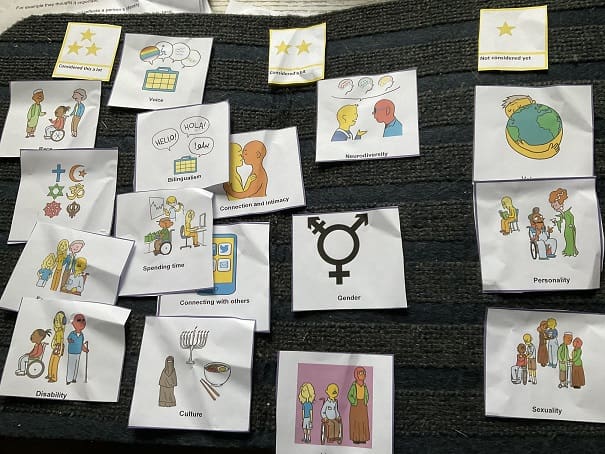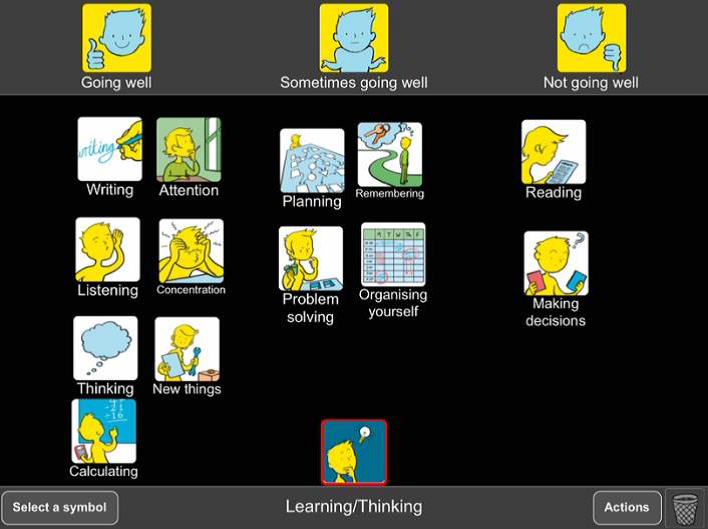The previous blog (read here) described the development of a set of symbols to prompt discussions around identity. In this blog, the authors illustrate how the symbols can be used to support practitioners to consider their own ideas about identity and how this may influence the clinical relationship.
The completed resource was trialled with practitioners working in a variety of settings.
Feedback
‘It help me understand and reflect on my own biases and how I am slowly working to be more aware of them and ask the right questions’
‘This Talking Mat was an eye opener about my worries and anxieties around saying the wrong thing’
Overall practitioners reported that using the resource helped;
• understanding and reflection on own biases and challenge default assumptions
• consideration of wider aspects of identity that were not routinely thought about
• holistic thinking by encouraging seeing clients in a wider context
• stimulate ideas about different questions to ask
• provide a safe platform for staff to open up
• address your own anxieties as a professional about getting it wrong and fear of ”putting your foot in it”.
It was also agreed that the resource could be used in diverse settings and not only within AAC.

Next steps
At the start of the process we were not sure where the discussions with the original project group would lead but the results of the pilot have shown that this Talking Mats identity resource is helpful for practitioners to mindfully reflect on their practice, allow unconscious bias to rise to the surface, consider all aspects of their clients’ identity to develop their practice, contribute to reducing inequalities and improving the responsiveness of services.
In our latest blog, Rachel Woolcomb, Talking Mats OT Associate, discusses how Talking Mats can support Reflective Practice for Occupational Therapists.
Taking time out to stop and reflect on our practice can be a challenge. We convince ourselves there are more important things to do, people to see, targets to meet, and therefore we just don’t have the time.
However, I suggest, that with this mind set we are doing ourselves, and the people to whom we provide support and care, a disservice.
Clinical supervision has always been embedded in the culture of occupational therapy and at its best should create a safe and supportive environment in which reflective practice can take place.
Unfortunately, in practice, the reality can look different.
The more I have used Talking Mats to enable my clients to think and express their opinions, the more I have been convinced, that there is also great benefit to them being used within the clinical supervision process.
I want to thank the occupational therapists who agreed to explore this further with me. They used Talking Mats to think about their coping skills at work, or reflected on how their ability to learn and think, impacted their job role.
They were surprised how easy they found it to think about the full breadth of their working life and the impact this had on their wellbeing. As clinicians, we are great at looking after other people and ensuring that their health and wellbeing needs are met, however, we are not so great at caring for ourselves.
The latest TMOT resource provides more information about why and how, Talking Mats can be an effective tool in enabling a reflective thinking space for clinicians. Check it out here: TMOT3 Reflective practice
Give it a go… You are worth it!
To find out more about our Talking Mats resources, check out this link:
https://www.talkingmats.com/shop/
 Online training login
Online training login 




